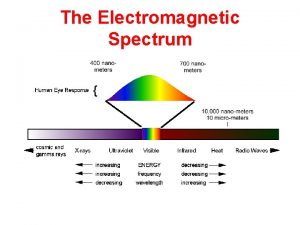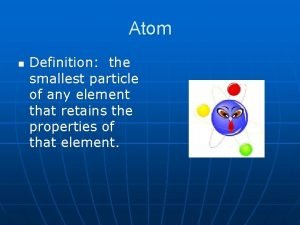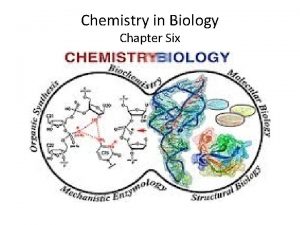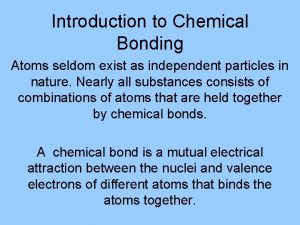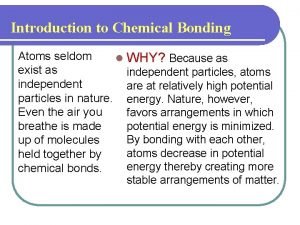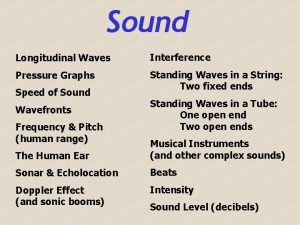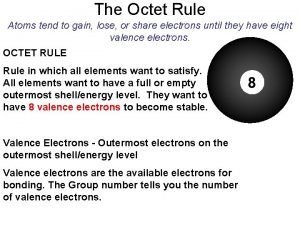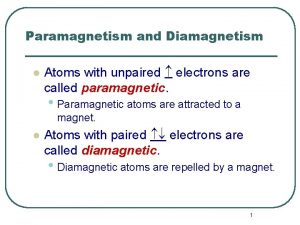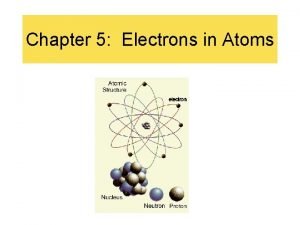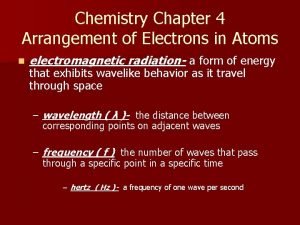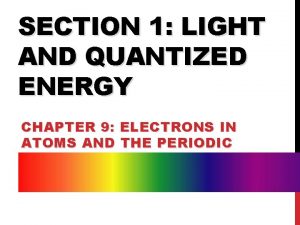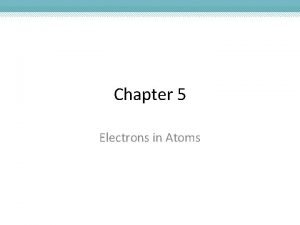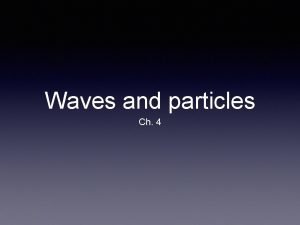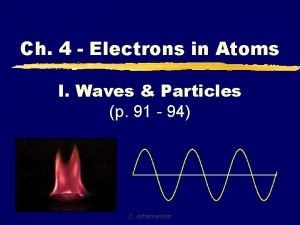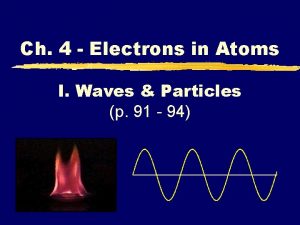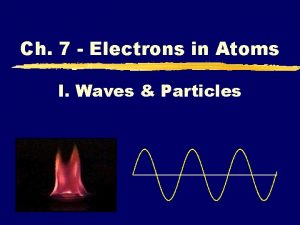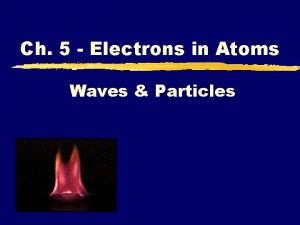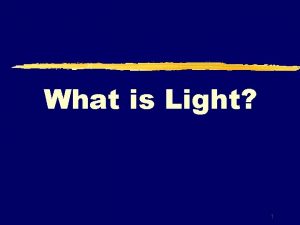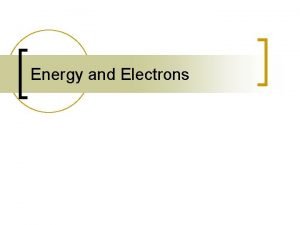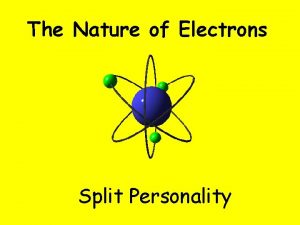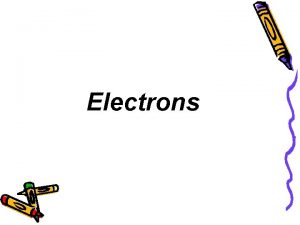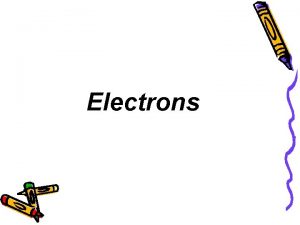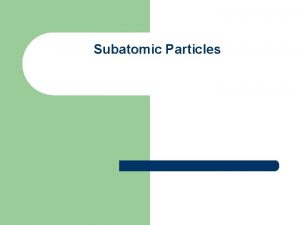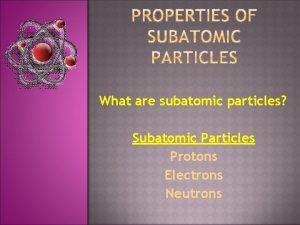Waves Particles Electrons in Atoms Waves Wavelength length




















- Slides: 20

Waves & Particles Electrons in Atoms

Waves • Wavelength ( ) - length of one complete wave • Frequency ( ) - # of waves that pass a point during a certain time period – hertz (Hz) = 1/s • Amplitude (A) - distance from the origin to the trough or crest

Waves crest A greater amplitude (intensity) origin A trough greater frequency (color)

EM Spectrum H I G H L O W E N E R G Y red R O Y G. orange green yellow B blue I indigo V violet E N E R G Y


EM Spectrum • Frequency & wavelength are inversely proportional c = c: speed of light (3. 00 108 m/s) : wavelength (m, nm, etc. ) : frequency (Hz)

EM Spectrum • EX: Find the frequency of a photon with a wavelength of 434 nm. GIVEN: WORK: =c =? = 434 nm = 4. 34 10 -7 m = c = 3. 00 108 m/s =

Quantum Theory • Planck – Observed - emission of light from hot objects gave a rainbow but light from the emission of atoms was not. – Concluded - energy is emitted in small, specific amounts (quanta) – Quantum - minimum amount of energy change

Quantum Theory • Planck (1900) vs. Classical Theory Quantum Theory

Line-Emission Spectrum excited state ENERGY IN PHOTON OUT ground state


Quantum Theory • Einstein (1905) – Observed - photoelectric effect

Quantum Theory • Einstein (1905) – Concluded - light has properties of both waves and particles “wave-particle duality” – Photon - particle of light that carries a quantum of energy

Quantum Theory z. The energy of a photon is proportional to its frequency. E = h E: energy (J, joules) h: Planck’s constant (6. 6262 10 -34 J·s) : frequency (Hz)

Quantum Theory • EX: Find the energy of a red photon with a frequency of 4. 57 1014 Hz. GIVEN: WORK: E=? E = h = 4. 57 1014 Hz E= h = 6. 6262 10 -34 E= J·s

Bohr Model • e- exist only in orbits with specific amounts of energy called energy levels • Therefore… – e- can only gain or lose certain amounts of energy – only certain photons are produced

En = -2. 179 x 10 -18 / n 2 J Find the energy released when an electron drops from the 5 th to the first level. E= Calculate the Frequency v= What type of radiation?

Bohr Model 65 4 3 2 1 • Energy of photon depends on the difference in energy levels • Bohr’s calculated energies matched the IR, visible, and UV lines for the H atom


Other Elements • Each element has a unique bright-line emission spectrum. – “Atomic Fingerprint” Helium z. Bohr’s calculations only worked for hydrogen!
 Longest wavelength in electromagnetic spectrum
Longest wavelength in electromagnetic spectrum Atoms seldom exist as independent particles
Atoms seldom exist as independent particles The smallest particle of an element
The smallest particle of an element How are the particles that make up atoms diagrammed
How are the particles that make up atoms diagrammed Atoms seldom exist as independent particles
Atoms seldom exist as independent particles Disulfur decabromide formula
Disulfur decabromide formula Atoms seldom exist as independent particles
Atoms seldom exist as independent particles Wavelength formula with length
Wavelength formula with length Periodic table of elements regents
Periodic table of elements regents Electrons in atoms section 2 quantum theory and the atom
Electrons in atoms section 2 quantum theory and the atom Electrons in atoms section 2 quantum theory and the atom
Electrons in atoms section 2 quantum theory and the atom What is the oxidation number of lithium
What is the oxidation number of lithium Diamagnetic elements
Diamagnetic elements 5 electrons in atoms
5 electrons in atoms Arrangement of electrons in atoms chapter 4 test
Arrangement of electrons in atoms chapter 4 test How do chemists model the valence electrons of metal atoms?
How do chemists model the valence electrons of metal atoms? Label an atom
Label an atom Stable electron configurations are likely to contain
Stable electron configurations are likely to contain Electrons in atoms section 1 light and quantized energy
Electrons in atoms section 1 light and quantized energy Ionic and metallic bonding chapter 7 practice problems
Ionic and metallic bonding chapter 7 practice problems Electrons in atoms section 1 light and quantized energy
Electrons in atoms section 1 light and quantized energy
